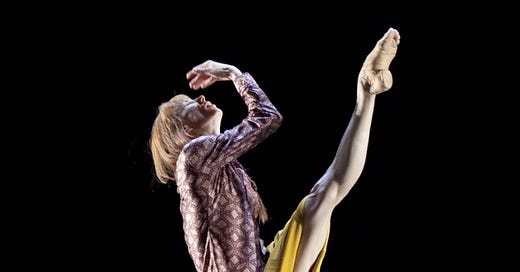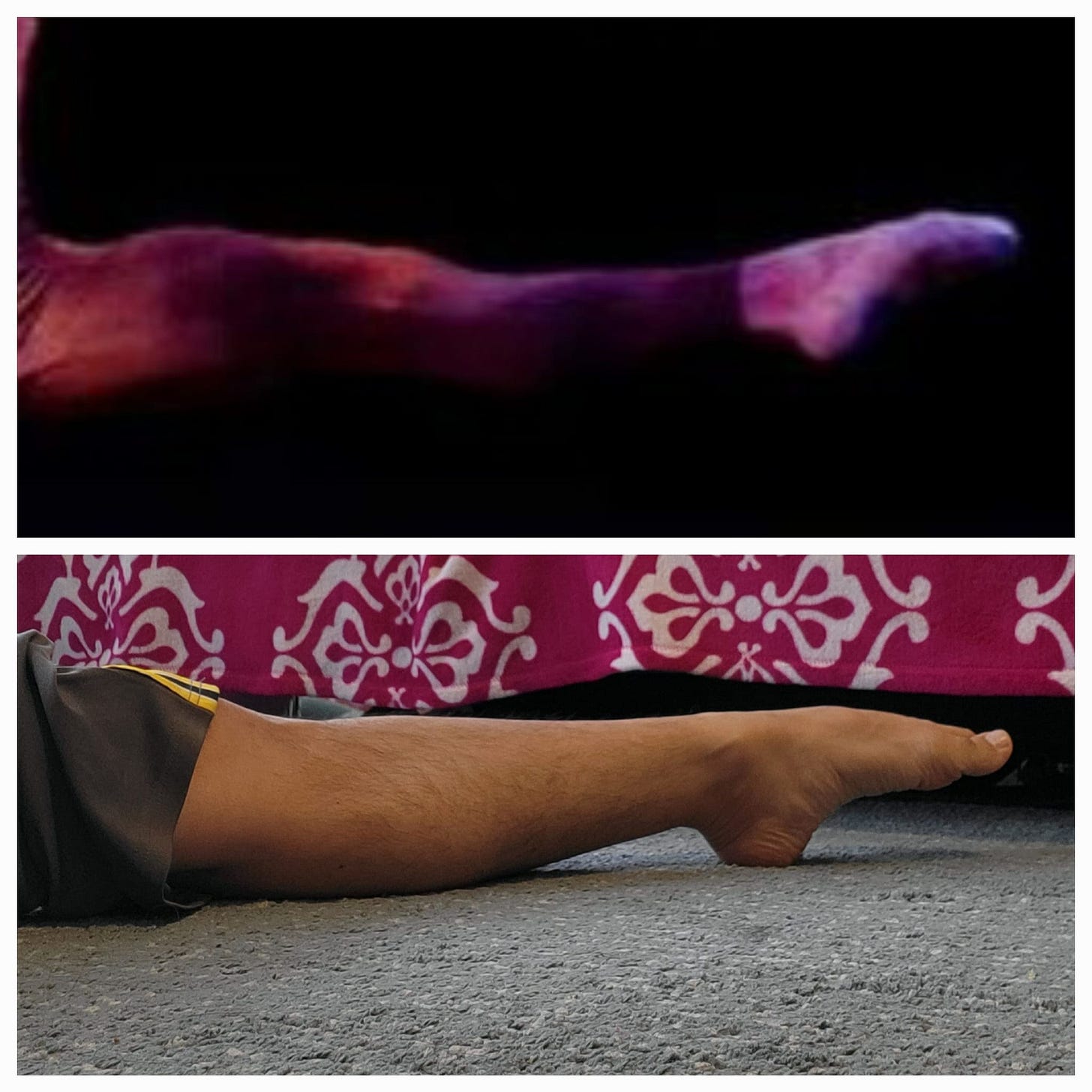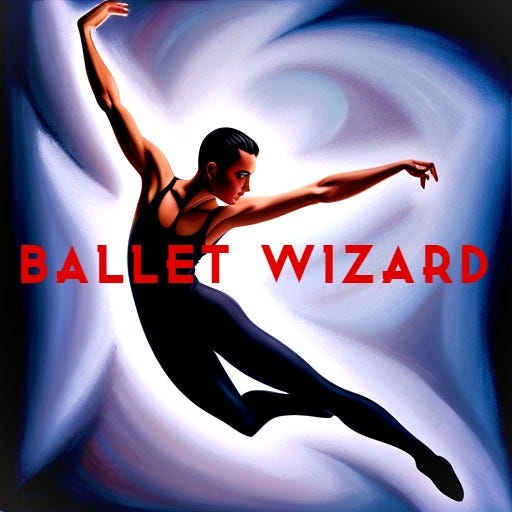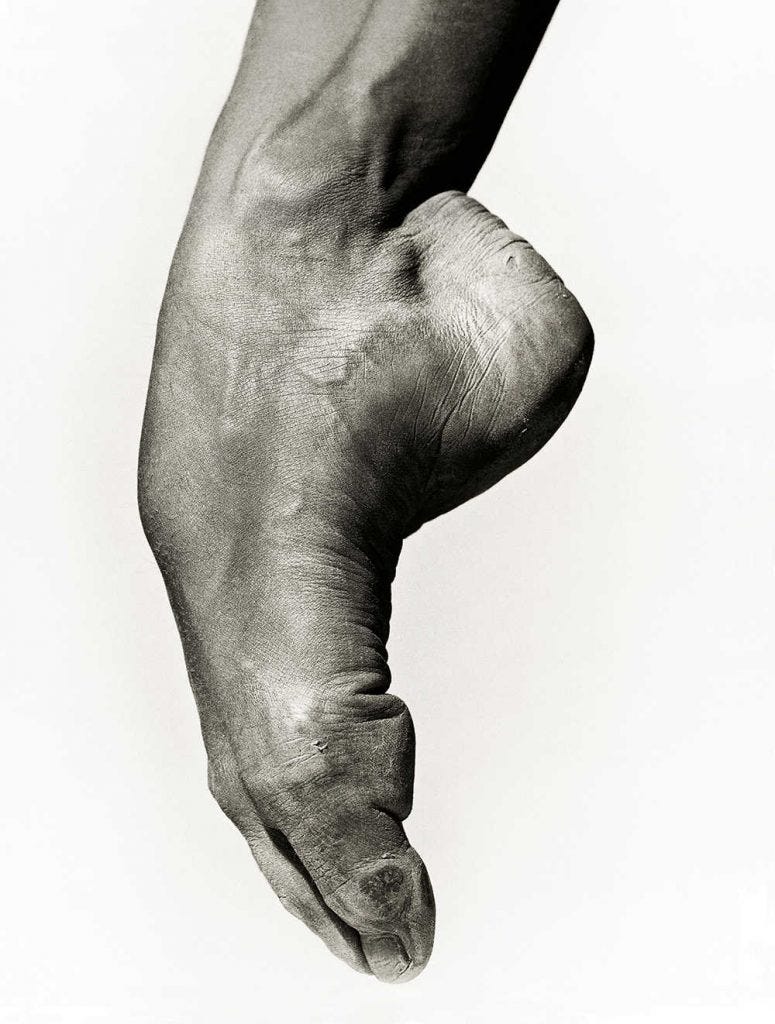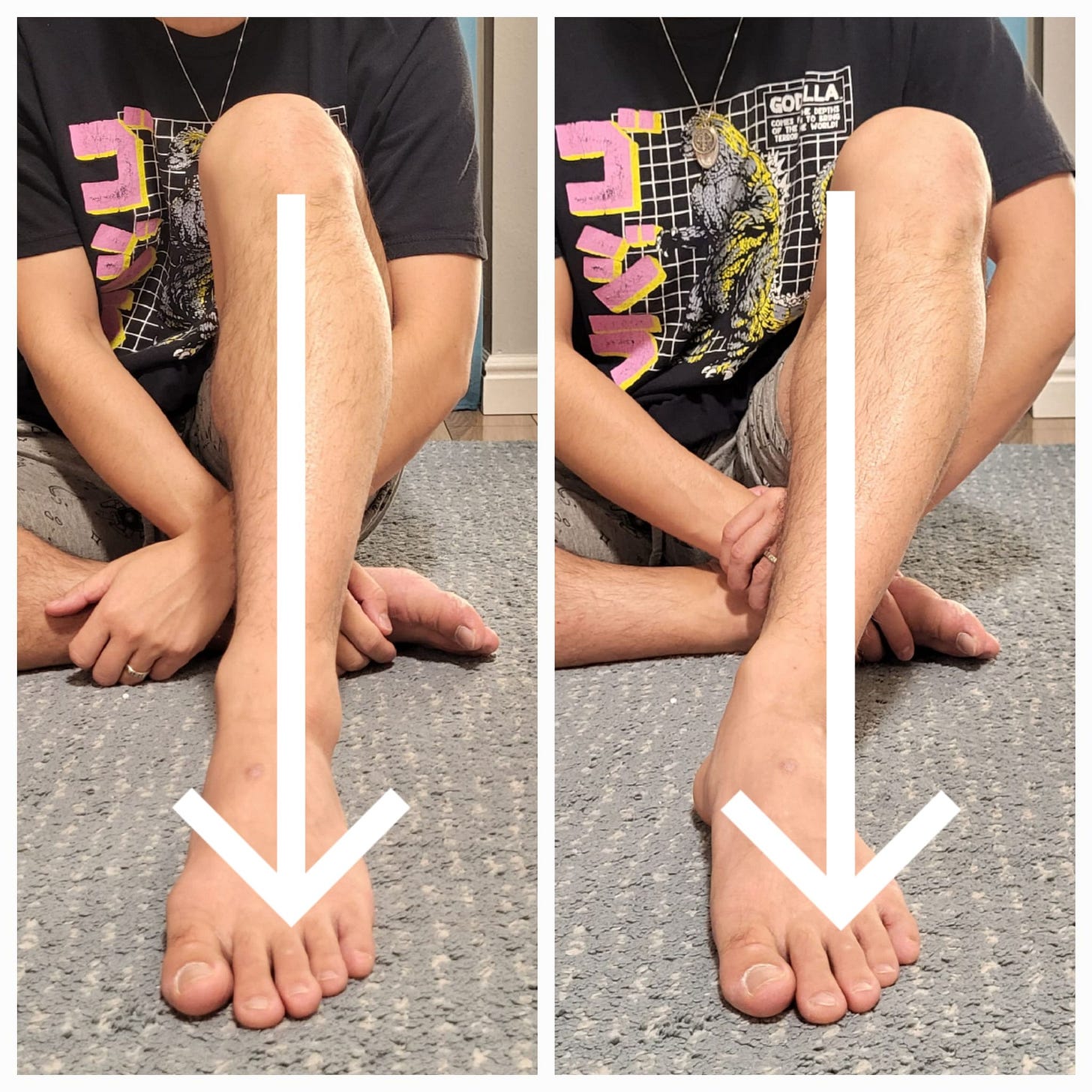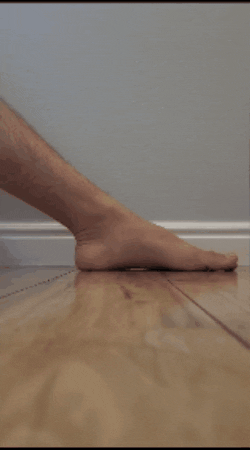Pointing your feet is a huge part of ballet technique. Some of us seem to have been gifted with beautiful high arches. And some of us have struggled with what ballet dancers call “biscuits” (feet that don’t point well). You just have to accept the feet you are born with…or do you?
I’m here to tell you from my own personal experience that it is possible to retrain your feet so that you can point better—better than you ever thought. My wife did it. And so did I.
Take my knowledge so you can change your feet too.
Of course, if your shoes are too tight, you are at a huge disadvantage. Size up as soon as you can. Your feet will thank you!
Pointing feet deserves two articles, so welcome to Part 1.
This week you’re going to learn how to point feet and exercises to practice new mechanics. Next week will focus on releasing tension that you didn’t even know existed.
There are two parts to a pointed foot:
The arch between your heel and ball of the foot.
The arch between your big toe and little toe.
First, let’s get the “are good feet genetic?” topic out of the way. The quick answer is mostly yes—but 100% of time, there are still ways to make your feet better.
What’s actually genetic:
-Flat feet tendency is genetic
-Strength of ligaments and tendons in the feet are genetic
What’s not genetic:
-Shape of your feet (like length of your toes) is not always genetic
-Bunions are not genetic
So there are a lot of genetic factors that contribute to “good” feet. If you have naturally good arches consider yourself lucky. But that said, even if you have naturally good feet, that can be ruined by not truly understanding how to use them correctly. And if you think you have “bad” feet, you can have better feet by understanding mechanics and training them.
Pointing feet correctly will unlock healthier and better ballet technique. Let me show you how you can go from the top picture to the bottom picture (thanks to my wife).

Like I mentioned before, there are two points you must train to get better and healthier feet. The arch under your feet, which I will call V-arch. And the arch at the ball of your feet, which I will call H-arch.
Please stop doing this while pointing
When I was a young student I was taught to just point it. And my teacher manually stretched my feet, forcing them into a very painful pointed position. That can be dangerous if it’s done wrong, so if you are a teacher who manually likes to stretch your student’s feet and you don’t understand how to actually point them mechanically, please stop. Just because a teacher can take a student’s foot and force the toes down to the ground does not help the student point better afterwards. It’s actually not safe.
Many of us have learned similar things when it comes to pointing our feet. And ironically, I recommend not continuing many of those ideas.
Stop doing these things:
Curling your toes
Engaging calf while pointing
Purposefully beveling feet
Instead, point like this
When I talk about how to actually point, I get all sorts of reactions. Surprise, amazement, intrigue. But mostly confusion and conflict. Because what I teach sounds and feels like the opposite of what is usually taught by most. I personally felt like I was sickling while retraining my feet, but I don’t feel sickled or look sickled anymore. It’s not that you don’t have good feet, but that you just don’t know how to use them. The problem comes when you try to “shape” your feet into something you’ve seen or been taught, rather than using them the way that makes most logical sense to your body.
New goals for pointing your feet:
Keep your toes elongated
The balls of your feet should arch like a dome
Point with your shin bone
Heels should go towards the balls of your feet
Here is a reference picture of Sylvie Guillem, with a textbook-perfect point. She has absolutely gifted feet, but this should be everyone’s goal.
Keep your toes elongated. This first one is probably the hardest one to practice. As dancers, we are always taught to point our feet all the way to the tip of the toes. No relaxed toes, you might hear. This correction is valid, but think of it a different way: You can point to the tip of the toes by following through but never by curling them. To many of us, this will feel like we are actually relaxing them—trust it. When you curl them, you immediately flatten your feet, and this can lead to tendonitis and swelling of your ankle.
The balls of your feet should arch like a dome. Typically, people’s feet get very tight in between the tarsals making it almost impossible to create a healthy dome. I always recommend stretching your toes and the top of the feet, so as to release the tension that is holding them tight (the culprit can also be tight shoes!).
Pointing with your shin bone. The bottom of your shin bone at the front and top of the ankle should lead the pointing (rather than your feet). Imagine pointing from the top of your ankle, the area that pushes against the ribbon of the pointe shoes where it crisscrosses. Start pointing by giving pressure to the crisscross, and keep the same pressure as you come back to standing (that part is equally important). This helps your calf to be more relaxed and helps your ankle to move more freely.
Heels should go towards the balls of your feet. That feeling of pointing your ankle should allow your heels to be free from the tension of overworked calf muscles. However, bringing heels to the balls of your feet can be hard to do if you have too much engagement with your big calf muscles. You must learn to point without engaging your calf. Your heels must be free in order to point correctly, and if your calf pulls your heels up, then it is impossible. Relaxing calves is your starting point.
Exercises to re-train your pointed feet
Your toes are one of the biggest problems when it comes to pointing feet. We need to train them not to curl so that your feet can move without your toes gripping. And you don’t want your toes to twist your feet, that causes misalignment and causes almost immediate injuries.
Interestingly, you want to re-train your big toe. Specifically, you want to train it to move freely, separate from the other toes. Most of us train the big toe to point so much that we neglect to train it the other way (and many of us cannot even flex it on its own without having the other toes move along with it). By overworking our big toe, our foot’s tendency is to roll toward the inside (causing muscles to bulk up on the inside of your foot). When you think of your footprint, your weight will be distributed incorrectly if your foot is constantly rolling toward the inside, setting your body up for instability and injury.
So here are exercises you can do to train your feet out of that.
Warning: When I show these exercise to my students, none of them can do it. Test yourself now.
Important note: Keep your shin aligned with the middle of your feet in all the exercises.
Training for V-arch
This exercise is kind of similar to toe curls but without curling toes. Bring your heel and ball of your feet closer together, creating a dome in the middle of your foot.
Important tips:
Align your shin bone to the middle of your feet, so your ankle is straight
Keep the ball of your feet and heel on the ground
Your toes must be relaxed. No grippy toes! Imagine you have no toes.
Training for H-arch
Re-train your big toe without twisting your feet. Can you keep your other toes still while dropping the big toe to the ground?
Can you keep all toes still while moving only your pinky toe?
Can you drop only the big toe and pinky toe? (Notice my concentration in the background).
I have never seen anybody successfully do these on the first try. And that’s okay! Even after training my feet, I still struggle with this. This is called piano—where you alternate using your big toe and little toe to touch the ground.
Here is what you must do during the piano exercise:
Align your shin bone to the middle of your feet
You must keep your heel and ball of your feet grounded to the floor
First, touch the ground with just the big toe 8 times
Second, touch the ground with just the little toe 8 times
Lastly, keep the middle three toes up while you put big and little toes down together. Hold it for 10 seconds
A bonus big toe exercise
If you’ve been curling your toes, this one is basically impossible. But it’s very important. I’ve seen 99% of dancers curling their big toe, and this makes their Achilles tendon really tight. The muscle that curls the big toe (Flexor hallucis longus) is right next to the big calf muscles, which will pull the heel up. When your heel is up and tight, you cannot bring it down close to the ball of your feet. So to release the heel, you must train the muscle that is the opposite of curling your big toe.
Here is what you must do during this exercise:
Keep your shin aligned to middle of your foot
No pushing with the other toes
Only go up until your other toes don’t engage
Pointing your foot (not your toes!) looks so simple, but once again, simple doesn’t mean easy.
I learned this, and I know you can too. We all deserve to have free heels, beautiful arches, and healthy toes.
I am on Instagram and you can reach me there on the comment section or DM. If you want to work with me or have a question, I’m good at responding. I’d love to connect with you here or there!

